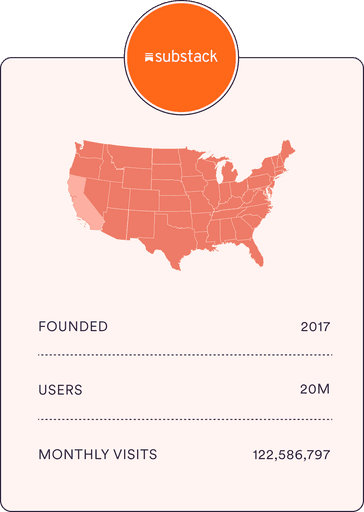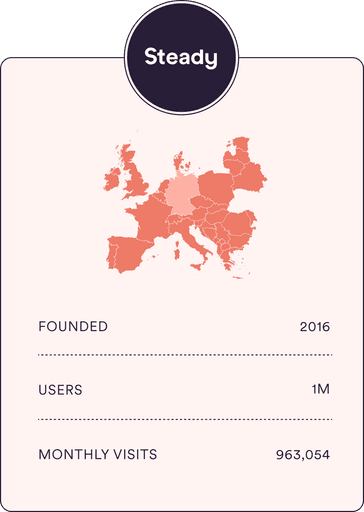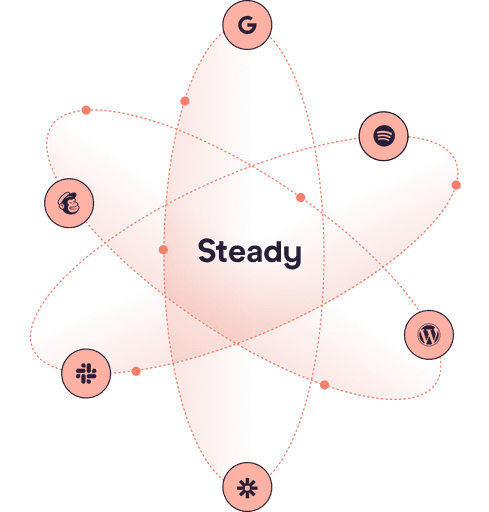VS.
What is Substack
Substack is one of the largest email newsletter platforms. The US-based company launched in 2017 and exploded in popularity as a platform for writers, journalists and cultural commentators. Substack lets you post articles for free on your profile page (on Substack’s website). When you hit publish, these are then mailed out like a newsletter to your subscribers. You can also paywall your content by adding subscriptions for premium articles.
If you’re a writer, Substack makes a lot of sense. The platform is heavily geared towards writing, with the option to embed images, videos and audio – much like a hybrid between a blog and a newsletter. If someone subscribes to your profile, they’ll receive your articles direct to their inbox whenever you publish. Readers can also discover new writers through Substack’s discovery feed or app, which can make it a good way to build a community.
The bottom line:
Substack is great for writers who want a free turnkey platform to publish newsletter articles, grow their audience and attract paid subscribers.
What is Steady
Founded in 2016, Steady is a Berlin-based membership platform that’s popular with European media makers who want to build communities across multiple channels. Just like Substack, it’s easy to start a free newsletter/blog and add paywalls to build a membership community. However, that’s where the similarities end. If you’re publishing different kinds of media or have an audience across more than one channel (for instance, a podcast on Spotify and a newsletter on Mailchimp), then Steady comes into its own
There’s also a difference in ethos between the two platforms. Steady’s white-label approach is all about connecting media makers directly to their audiences, putting the spotlight on your brand. In other words, Steady is the engine behind the scenes and not a destination for members. Whereas Substack is a media publisher, therefore readers engage with Substack and find their favourite writers through the platform.
The bottom line:
Steady is great for EU-based media makers who publish across multiple channels and want a direct relationship with their membership community.
Key features
Free newsletter tool
Publish articles as newsletters
Personalised audio RSS feed for
members-only content
Spotify integration for subscription content
Collect payments directly on your website
Paywall integration on your website to attract
paying members
Adblock detection
Drip Campaigns
Option to create unlimited paid tiers for members
VAT calculated and managed automatically
Annual plans
Membership analytics
Comment and reaction features on posts
Support with growing your membership
Comparing revenue fees

Which platform gives you the highest payout? Steady and Substack both charge 10% of revenue, but the additional payment fees are slightly different.
To illustrate how this stacks up in the real world, here’s a quick example of how much money a media maker will keep after commission and transaction fees, depending on which membership platform they choose.
Let’s imagine Sandra is a writer who lives in Italy and starts a membership programme for her newsletter. A quarter of her members are in the UK, and the rest are in Italy. Say she earns 2,492.27 EUR (gross) from 686 membership payments in one month. How much will Steady and Substack take in transaction fees and commission?
Fees
What else...
Integrations and add-ons
Substack is a closed system designed as a stand-alone newsletter platform. It does offer an HTML sign-up box that you can post on your website and some other limited integrations. However, Substack’s appeal is a seamless user experience where content creators can focus on writing. If you’re building an independent media business or looking for a solution that integrates with other tools you use, there are better options out there.
Steady is almost the opposite in that it’s designed to connect with your existing ecosystem. In fact, Steady integrates with thousands of lead-gen and productivity tools – from WordPress to MailChimp, Spotify and more. Think of Steady as one CRM for everything.
The winner:
Steady. Although, how important integrations are to you will obviously depend on the other tools you use to run your business.

Substack controversy
There are plenty of news articles that cover Substack’s anti-censorship stance in more depth. However, we’ve included a brief mention here because it provoked such a strong response from many media makers who currently use Substack.
Part of Substack’s appeal is that they empower a diverse range of voices on their platform. One of their core values is “freedom of expression to share thoughts and ideas without censorship”. However, towards the end of 2023, Substack faced a revolt over their anti-censorship stance
The Atlantic published an investigation into the growing networks of white nationalists, antisemitic and neo-Nazi blogs on Substack. After being publicly criticised for profiting from hate speech, Substack has stated that they don’t think censorship or demonetising these platforms is the answer. This sparked a backlash with many prominent content creators, including technology journalist Casey Newton, threatening to boycott the platform.
Substack remains a popular site for writers, journalists and cultural commentators; however, this controversy has led to many independent media makers looking to other membership platforms
Migrating to Steady or Substack
If you already have an audience, how easy is it to switch to a new membership platform? Both Steady and Substack make it easy to import your mailing list in minutes. Regardless of whether you choose Steady or Substack, you legally own your content and contacts.
Substack supports imports from other popular platforms including Mailchimp, Beehiiv, Ghost, WordPress, Medium and others. Similarly, Steady also makes it easy to import existing members from these platforms and more with full GDPR compliance.
The winner:
Draw. Both platforms make it easy to migrate your content and contacts.
THE VERDICT






